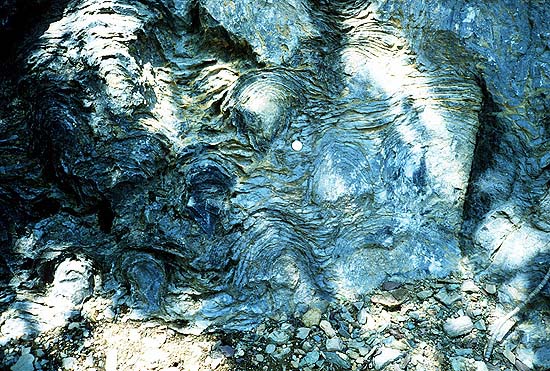Abiogenesis or biopoiesis is the natural process of life arising from non-living matter such as simple organic compounds.
The Earth was formed about 4.54 billion years ago. The earliest undisputed evidence of life on Earth dates at least from 3.5 billion years ago, during the Eoarchean Era after sufficient crust had solidified following the earlier molten Hadean Eon. There are microbial mat fossils found in 3.48 billion-year-old sandstone discovered in Western Australia. Other early physical evidence for life on Earth is biogenic graphite in 3.7 billion-year-old metasedimentary rocks discovered in Western Greenland. Nevertheless, several studies suggest that life on Earth may have started even earlier, as early as 4.25 billion years ago according to one study, and 4.4 billion years ago according to another study. Earth is the only place in the universe known to harbor life. Nonetheless, the exact steps in the abiogenesis process, whether occurring on Earth or elsewhere, remain unknown.
Scientific hypotheses about the origins of life can be divided into three main stages: the geophysical, the chemical and the biological. Many approaches investigate how self-replicating molecules or their components came into existence. On the assumption that life originated spontaneously on Earth, the Miller–Urey experiment and similar experiments demonstrated that most amino acids, basic chemicals of life, can be racemically synthesized in conditions which were intended to be similar to those of the early Earth. Several mechanisms have been investigated, including lightning and radiation. Other approaches (“metabolism first” hypotheses) focus on understanding how catalysis in chemical systems in the early Earth might have provided the precursor molecules necessary for self-replication.
